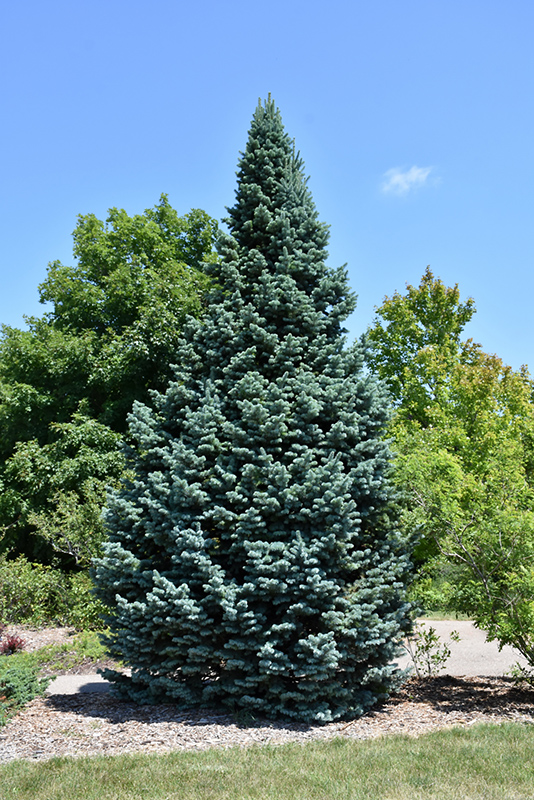Arizona Compact Rocky Mountain Fir
Abies lasiocarpa 'Arizonica Compacta'
Height: 4 feet
Spread: 24 inches
Sunlight:
![]()
![]()
Hardiness Zone: 4b
Other Names: Subalpine Fir, Alpine Fir
Description:
A stunning dwarf version of this southern Rocky Mountain fir with distinctly blue foliage all season long, very slow growing, retains its mounded spreading habit for many years; tolerates drier conditions than most firs
Ornamental Features
Arizona Compact Rocky Mountain Fir is a dwarf conifer which is primarily valued in the landscape or garden for its interestingly mounded form. It has attractive steel blue evergreen foliage which emerges powder blue in spring. The needles are highly ornamental and remain steel blue throughout the winter.
Landscape Attributes
Arizona Compact Rocky Mountain Fir is a dense multi-stemmed evergreen shrub with a mounded form. It lends an extremely fine and delicate texture to the landscape composition which can make it a great accent feature on this basis alone.
This is a relatively low maintenance shrub, and usually looks its best without pruning, although it will tolerate pruning. It has no significant negative characteristics.
Arizona Compact Rocky Mountain Fir is recommended for the following landscape applications;
- Mass Planting
- Rock/Alpine Gardens
- General Garden Use
Planting & Growing
Arizona Compact Rocky Mountain Fir will grow to be about 4 feet tall at maturity, with a spread of 24 inches. It tends to fill out right to the ground and therefore doesn't necessarily require facer plants in front. It grows at a slow rate, and under ideal conditions can be expected to live for 80 years or more.
This shrub does best in full sun to partial shade. It prefers to grow in average to moist conditions, and shouldn't be allowed to dry out. It is not particular as to soil pH, but grows best in sandy soils. It is quite intolerant of urban pollution, therefore inner city or urban streetside plantings are best avoided. This is a selection of a native North American species.

